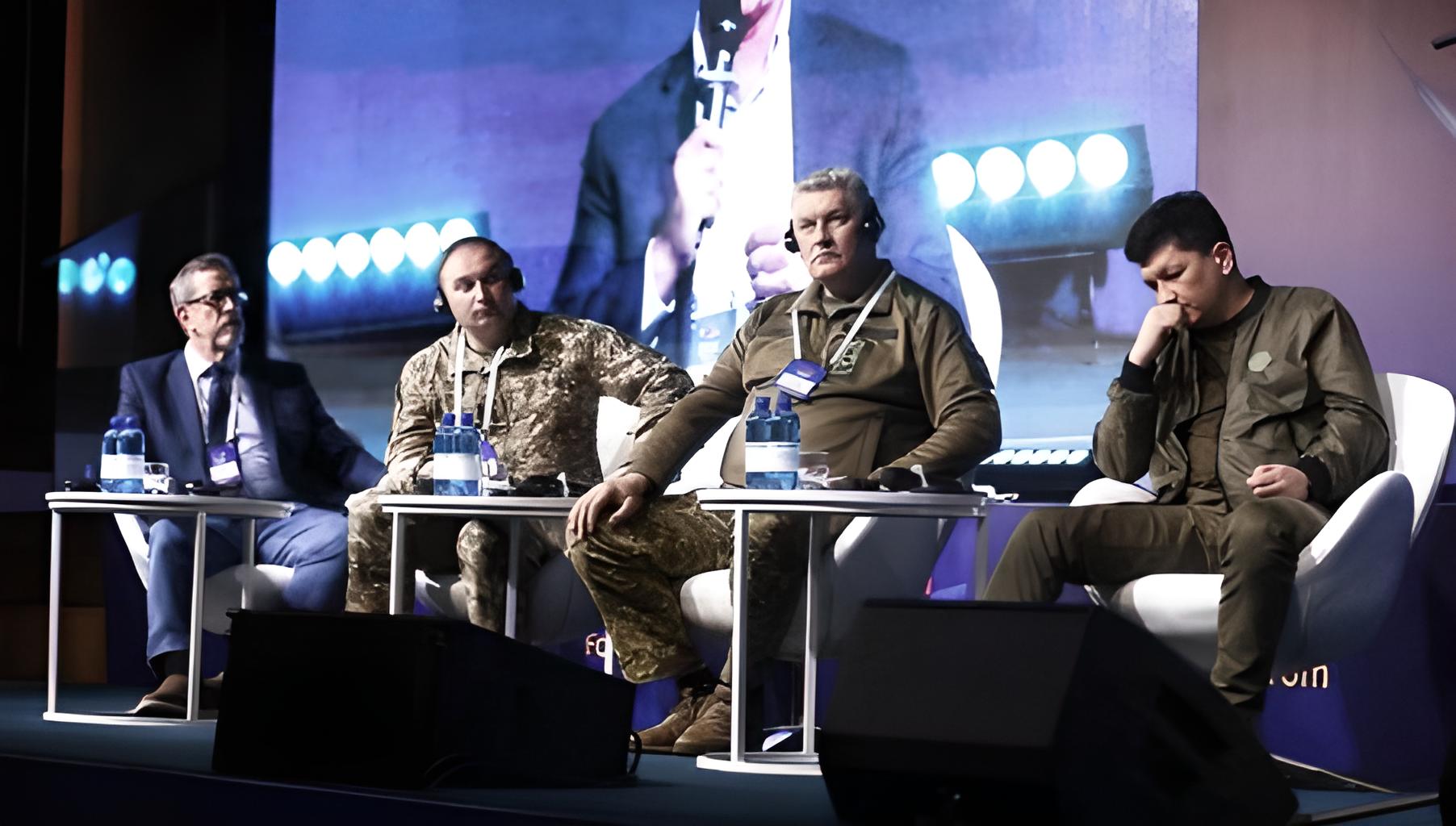The afternoon session of the inaugural Ukrainian-American Forum conference in Kyiv on 19 May focused on the issue of demining, the clearance of landmines and explosive remnants of war (ERW) on Ukrainian territory.
In his keynote speech which kicked-off this element of the conference, Oleksii Reznikov the Minister of Defense of Ukraine had quantified the extent of the contaminated area. Current estimates put the affected land area as around 160,000 square kilometers while contamination in the Black Sea and the Sea of Azov affects around 400,000 square kilometers; this makes Ukraine the most polluted country in the world.
JOIN US ON TELEGRAM
Follow our coverage of the war on the @Kyivpost_official.
Following the Minister’s departure, the moderator of the session, Daniel Rice, president of the American University Kyiv (AUK), introduced the eight-person expert panel who would discuss the demining problem. They were:
· Ruslan Berehulia - Secretariat of National Mine Action Authority
· Glenn Curtis - Louisiana National Guard
· John Fleming - Senior Vice President of Acuity International
· Bohdan Bondar - Head of Administration State Special Transport Service, MoD
· Vitali Kim - Head of Regional administration of Mykolaiv

EU Transfers €1.5 Bln Raised From Russian Assets for Ukraine
· Maksym Hromov - The Ministry of Strategic Industries
· Anthony Connell - FSD Fondation suisse de déminage
· Carl Case - A.R.C. Consultants
The panel was conducted as a simple question-and-answer session. President Rice posed a question, or statement, relating to a demining operational problem area and asked for the views of the panel members. The main issues addressed are summarized below.
 Demining Panel Members: Carl Case - Ruslan Berehulia - Bohdan Bondar - Vitali Kim.Photo: Ukrainian American House
Demining Panel Members: Carl Case - Ruslan Berehulia - Bohdan Bondar - Vitali Kim.Photo: Ukrainian American House
Extent of the Contamination
It was clear that the initial estimates of 160,000 square kilometers would need to be interrogated by way of technical and non-technical surveys, with the aim of confirming how much of this “suspect” area is actually mine / ERW contaminated, as scarce demining resources should only be deployed to areas that are confirmed as such.
Head of the Mykolaiv Regional Military Administration, Vitaly Kim, estimated that 30 percent of his region was contaminated, with a third of that being desperately needed agricultural land. In addition, Kim highlighted that as “…the Mykolaiv region is a summer recreation area with a coastline of almost 140 kilometers, there is an urgent need for the survey and demining of the region's water area.”
Coordination
When demining programs are initiated in the field, coordination mechanisms are essential to ensure that strategic and forward planning takes place and that country- wide mine-action activities are consistently integrated, monitored and reviewed.
Two national bodies have been established to control and coordinate mine clearance in Ukraine:
· A national mine action center (NMAC) managed by the State Special Transport Services (SSTS) of the Ministry of Defense (MoD);
· A humanitarian demining center (HDC) managed by the State Emergency Service of Ukraine (SESU) of the Ministry of Interior (MoI).
Priority setting
Ukraine will establish mechanisms to set priorities for demining activities based on need and the most effective use of available resources. Priorities for mine clearance will often include: provision of emergency assistance; settled land with high civilian casualty rates; land required for the resettlement of refugees and internally displaced persons; land required for agriculture; community development; access to and free operation of health services; reconstruction; and infrastructure development.
The nature of the contamination and planned future use of the areas being cleared is an issue that needs to be addressed before deciding on the clearance method to be used. In a mined area, the UN ‘standard’ clearance depth of 13-15 cm may be adequate for grazing land but, if plowing or building is involved, this may be insufficient particularly where there is contamination from artillery missiles, rockets or shells.
Mechanical demining
Mechanical demining systems can greatly increase the effectiveness and efficiency of landmine/ERW clearance operations. Machines have the potential to accelerate the progress of other assets by removing vegetation and tripwires and breaking up soil in support of manual demining.
A variety of purpose-built mechanical systems are available either operator driven or remotely controlled, equipped with navigation and positioning systems to ensure accurate clearance. The panel also identified the possibility of using mechanical systems created by armoring existing agricultural or construction vehicles and machinery as a low-cost alternative to formal demining machines.
The use of machines could be problematic in areas that have both landmines and large-caliber unexploded artillery shells or aircraft bombs which could destroy the vehicle.
Remote sensing
Remote Sensing covers the use of drones or other devices not only to assist in planning, monitoring and evaluating clearance operations, but also to identify potentially contaminated areas. Unmanned aerial vehicles are often used as carriers for remote sensing equipment and technologies associating both together are fast developing. This was mentioned in passing during the panel discussion.
Quality Management System
Quality Management will be a two-stage process.
Quality Assurance (QA), involves the accreditation and external monitoring of all aspects of a demining organization’s activity before and during the demining process. Demining organizations must establish an effective management organization, develop and maintain procedures, and apply these procedures in a safe, effective and efficient manner. Management procedures should be transparent and auditable. Community involvement in the demining process should be monitored as part of the QA process.
Quality Control (QC), involves the process of inspection of cleared land before it is formally released to the beneficiary for use.
The combined application of QA (before and during the clearance process) with post-clearance QC will contribute to achieving an acceptable level of confidence that the land is safe for its intended use. The quality of clearance must be acceptable to both the National Mine Action Authority (NMAA) and the local community that benefits.
Certification / Accreditation
The panel all agreed that some form of accreditation process needed to be applied to mine action organizations before they are permitted to start operations. This would confirm that each demining body is properly experienced, skilled, established, staffed, and equipped, and has adequate systems, procedures and support structures in place. Accreditation answers the questions: “Is the organization competent and able to carry out mine and ERW clearance safely, adequately and in a timely fashion?”
Lessons learned
Ukraine doesn’t have to ‘reinvent the wheel.’ Advice and experience, both internationally and domestically, is available on every aspect of demining and the panel indicated that this would be invaluable in order to ensure that the mistakes of others were not repeated.
It was emphasized that demining activities should not take place in isolation but should be closely integrated with the rebuilding of Ukraine alongside humanitarian and development programs.
You can also highlight the text and press Ctrl + Enter






